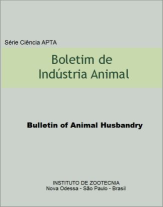Milk production and the expansion of the cultivation of sugarcane in the municipality of Rubiataba, Goiás
Palavras-chave:
development, production efficiency, productivityResumo
Livestock breeding and cultivation of sugarcane have great economic and social importance for Brazilian agribusiness. Sugarcane growing in recent decades has expanded rapidly, but this has generated several questions about the impact on other agricultural activities. Given this context, the question arises: Has milk production in the municipality of Rubiataba, Goiás, declined with the expansion of sugarcane cultivation? The objective of this study was to analyze the evolution of milk and sugarcane production in the municipality of Rubiataba, Goiás, from 1985 to 2015, in order to explain the effect of the expansion of sugarcane on milk production. The municipality is located in the Ceres micro-region, Goiano Centro meso-region, in the state of Goiás, Brazil. The data were obtained from the Brazilian Institute of Geography and Statistics, covering the period from 1985 to 2015. The herd size, milk production, cow productivity, number of cows, area harvested, production and productivity of sugarcane and the production values were analyzed. The values were corrected for the current currency and inflation. Simple linear regression analyses were used to evaluate the annual growth rates of both milk and sugarcane production. In order to compare the two agricultural production systems, Pearson correlations were calculated between the two activities. During the period, milk production increased by 2.10% per year (p<0.05 and R² 72.20%), rising from 7.10 million to 23.00 million L. The number of dairy cows was 12,500 head in 1985, rising to 17,000 in 2015, with growth of 0.48% per year (p<0.05 and R² 47.60%). The cattle herd, including beef and dairy cattle, presented small average annual growth of 0.44% (p<0.05 and R² 39.30%). In 1985, the municipality had 74,600 head, rising to 98,000 in 2015. Productivity per cow increased by 1.60% per year (p<0.05 and R² 65%), from 568 to 1,353 L cow-1 year-1. The value of milk production in 1985 was R$ 9.95 million, increasing to R$ 20.16 million in 2015. The area harvested and the production of sugarcane grew 2.99% (p<0.05 and R² 72.40%) and 2.59% (p<0.05 and R² 64.50%) per year, respectively. The total area rose from 289 ha in 1985 to 5,683 ha in 2015. The production of sugarcane in 1985 was 28,900 t and in 2015 it was 355,881 t. Sugarcane yield declined -0.38% per year (p<0.05 and R² 57.30%). At the beginning of the period it was 100 t ha-1, but it fell to 63 t ha-1 in 2015. The value of sugarcane production in 1985 was R$ 6.21 million, rising to R$ 19.68 million in 2015. The area of pastures and crops in 1985 represented 82.17% and 12.52% of the area of the municipality, respectively. In 2006, pastures fell to 64.11% and crops increased to 26.63%. The variables related to the sugarcane crop presented a positive correlation and medians with the variables of the milk activity, except the sugarcane productivity, due to the reduction in the analyzed period. The correlation between the two productions was 0.548 (p<0.05), that is, both activities evolved. Sugarcane cultivation increased production by expanding the area harvested, but it needs to improve productivity per area, which presented a reduction in the period. As the two activities increased their production from 1985 to 2015, dairy farming improved productivity, but not sugarcane. When comparing the evolution of the production of the two activities, it can be affirmed that the milk production evolved even with the expansion of sugarcane.
Downloads
Downloads
Publicado
Edição
Seção
Licença
Os autores não serão remunerados pela publicação de trabalhos, pois devem abrir mão de seus direitos autorais em favor deste periódico. Por outro lado, os autores ficam autorizados a publicar seus artigos, simultaneamente, em repositórios da instituição de sua origem, desde que citada a fonte da publicação original seja Boletim de Indústria Animal. A revista se reserva o direito de efetuar, nos originais, alterações de ordem normativa, ortográfica e gramatical, com vistas a manter o padrão culto da língua e a credibilidade do veículo. Respeitará, no entanto, o estilo de escrever dos autores. Alterações, correções ou sugestões de ordem conceitual serão encaminhadas aos autores, quando necessário. Nesses casos, os artigos, depois de adequados, deverão ser submetidos a nova apreciação. As opiniões emitidas pelos autores dos artigos são de sua exclusiva responsabilidade. Todo o conteúdo deste periódico, exceto onde está identificado, está licenciado sob a Licença Creative Commons Attribution (CC-BY-NC). A condição BY implica que os licenciados podem copiar, distribuir, exibir e executar a obra e fazer trabalhos derivados com base em que só se dão o autor ou licenciante os créditos na forma especificada por estes. A cláusula NC significa que os licenciados podem copiar, distribuir, exibir e executar a obra e fazer trabalhos derivados com base apenas para fins não comerciais.













